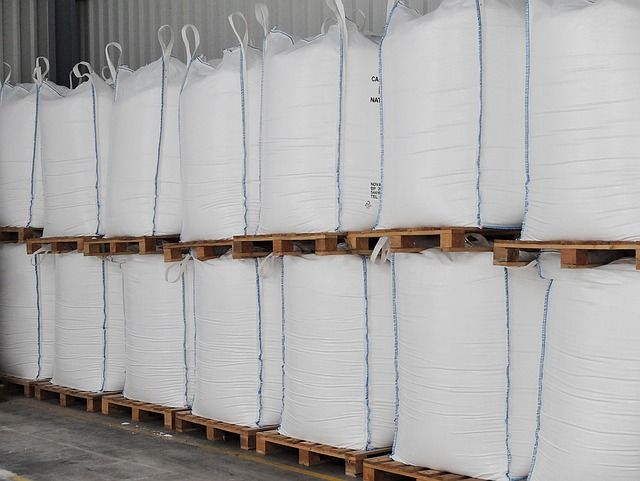The FIBC (Flexible Intermediate Bulk Container) better known as big bags, are one of the most used means for packaging, storage and transport of a multitude of bulk products.
In addition, big bags are used by companies in a large number of sectors for many different purposes. For example, in the construction sector they are used for waste collection and in the agri-food sector they are used for the transport of all types of cereals and nuts.
It is a type of flexible packaging in the form of a big bag made of different woven fabrics made of polypropylene yarns.

Types of big bags
One of the most important factors when choosing the optimal type of big bag is the properties of the product or material to be transported. The most commonly used standard model is usually 90 cm x 90 cm at the base and 100 cm high. It is made of white polypropylene raffia and has 4 handles.
However, there are a large number of types of big bag on the market, the result of combining different measures, colour, fabrics, maximum weight and, in addition, added elements that can be incorporated according to the customer's demands. For example, we can choose that the bottom (lower part of the big bag) is flat and closed or that it has a discharge valve incorporated, to facilitate the emptying of the contents of the big bag. As far as the mouth (upper part of the big bag) is concerned, we can opt for it to be open, with a loading valve or with a closing sleeve with a knotter, in order to secure the load inside the big bag.
Finally, we can also incorporate a liner in the big bag, which is a cover that is placed inside the big bag to protect the goods from moisture, oxygen or sunlight.

Advantages of using big bags
Big Bags have great advantages that make them one of the most common ways to pack and transport bulk goods:
-Being a type of stackable packaging, it saves space when storing or transporting them. When they are empty, they can be folded and the volume they occupy is minimal.
-They are recyclable and biodegradable, which does not have a negative impact on the environment.
-Very efficient packaging: Most of today's industrial machinery has been adapted to these packages, thus saving time and costs in filling and emptying big bags.
-Support weights up to 2,000 kg
At C&S Packaging Supplier, a company belonging to the Embalex Group, we offer you a wide variety of big bags and liners, both standard and custom sizes according to your specific needs.








